Burnski on creating the first album of his decade-long career
The tools and technique behind latest release, DNA
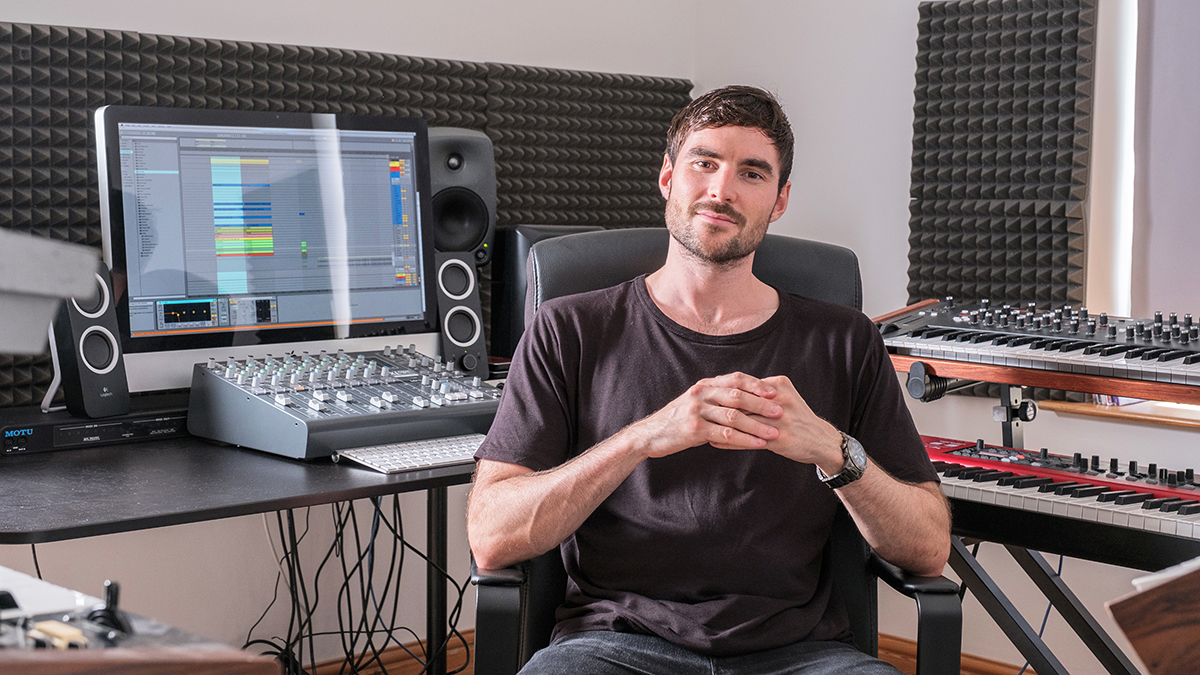
Burnham on Burnski
After spending a decade refining his craft and reconceptualising dance music, Burnski’s career is now ready for take-off. We talk tech with the DJ/producer on his debut album release, DNA.
The most talented producers tend to have a solid recognition of their genetic heritage. For James Burnham (aka Burnski), Detroit techno and Chicago house form the bedrock of his debut album DNA, where classic traits are welded to create minimalist, yet deeply addictive, dance mechanisms.
Despite his youthful appearance, Burnski is a decade into his career. He’s put in the hard graft and built solid momentum with a slew of releases on assured labels, including his own imprint, Constant Sound. As a DJ, he also melds past and future, bringing things back to basics with his love of vinyl before stamping his unique mark.
We tracked James down to find out more about how DNA was made and check out the contents of his studio...
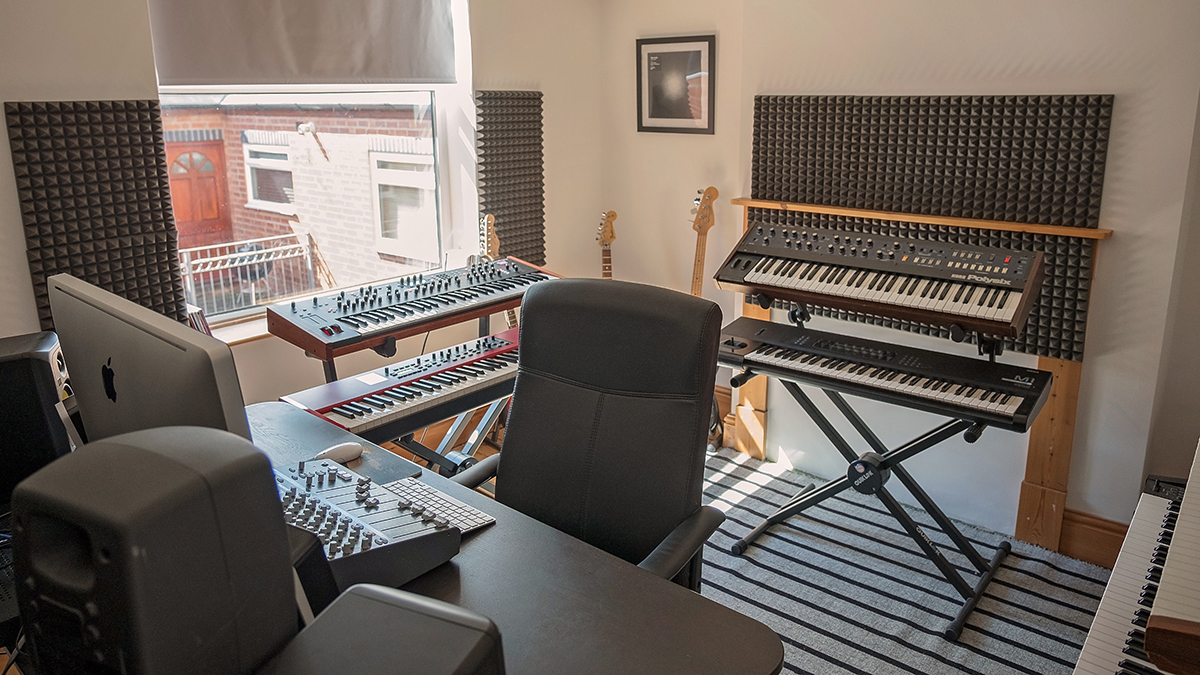
The end of albums?
You’ve been releasing music since 2005, so how come DNA is your first album?
“I’ve actually produced at least one album before but it didn’t come out, so I’ve had experience but this is my first release. There could be a number of reasons, but the beauty of having my own label is that I produced this album and was able to have full control and release it myself. That was so much more exciting and satisfying to me, and why this one came together so quickly, because I took everyone else out of the equation and did it for myself. Obviously, when you’re doing an album for another label, a lot of different factors go into that.”
Are albums dying? A lot of producers seem to favour singles and EPs these days…
“Quite possibly, but I find it a lot more enjoyable working on an album, especially for my type of music because I’ve got quite a broad palette. Sound-wise I’m into everything and I feel I can get what I’m about over to the audience a lot better by doing an album. Singles are great, but I’ve really expressed what I’m about on DNA.”
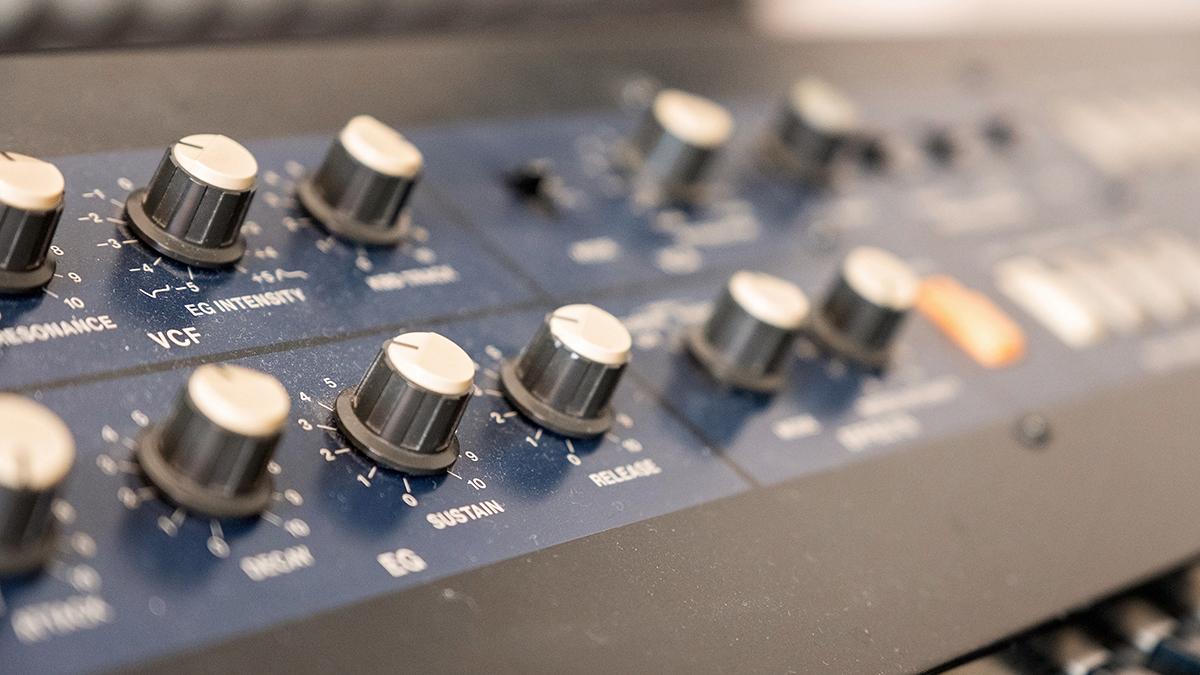
Influences
DNA sounds modern yet has classic, staple elements from Detroit techno and acid genres – is that where you’ve always felt most comfortable?
“Someone explained it quite well; they said it’s got elements of garage, acid, techno, breakbeat, electro and house, and I’ve just tried to bring all these sounds together. I’ve never stuck to one sound and I’m always trying to explore new avenues. It’s been fun not trying to zoom in on one specific sound; there’s all sorts thrown in there, but it still works and gels together. It’s pretty much what you said – it sounds old but a little bit futuristic. If it’s still relevant in five or ten years’ time, I’d be over the moon. If there’s ever a goal, it’s to make something that stands the test of time.”
The spacey artwork and moody sci-fi tracks like Cosmic Warfare, reminded me of Plastikman or even John Tejada. Are these influences of yours?
“Again, it’s such a broad spectrum. I’m into pretty much everything. I mean I really like John Tejada, but the Cosmic Warfare track is maybe more reminiscent of electro guys like Claro Intelecto. He’s someone whose music really speaks to me. With the artwork, I had an image in my head of what I wanted about a year ago and when I saw it I knew it would just work perfectly. It’s by an artist called Charles Bergquist, so we’re definitely going to work with him again.”
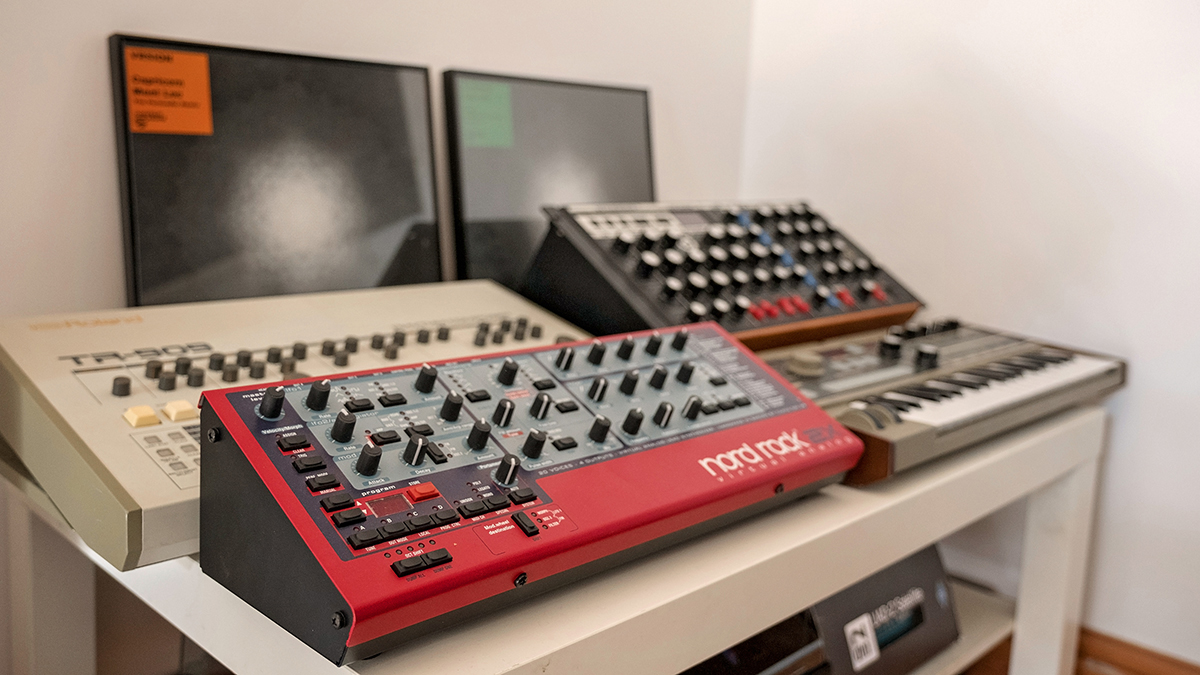
Timeless loops
The track DNA is an instant classic. What was the recording process for that one?
“With this album, I spent a solid two weeks, 16 hours a day, recording my synths and trying to really get into it, recording random stuff including all the mistakes. I pretty much recorded nearly every preset on every machine I’ve got and was really inspired, so the majority of the sounds I used came out of that. Some of the loops might have been five seconds long and others three minutes long, and I could have created another four albums to be honest, but I chose sounds that I thought suited the project. I recorded them into the Mac onto Ableton and began working on all these loops – the music pretty much wrote itself after that.”
What did you use for sound generation?
“So a lot of it was done on the Moog Voyager and the Nord Lead. Because the Moog is analogue, it’s got a really heavy sound – I kind of get them talking to each other, so the Moog is hitting one note and then there’s a bit of space for the Nord. But it’s worth pointing out that although I’ve got quite a nice studio and a lot of kit, I’d actually recommend not getting so much gear and really focusing on just one piece of kit. Simplicity and limitation is more important than having lots of gear; you can get a lot more done. Now I’ve unplugged the majority of my gear and I’m finding that I tend to get better results as I don’t have all these options in front of me.”
Would it be correct to say that these limitations are what give your music a sense of consistency?
“Yeah, I guess so. Using one machine is going to gel all the music together more than if you’re using eight different things because you’re going to get an instantly recognisable sound. The funny thing is I’ve done it the wrong way around. I bought a lot of kit, and it’s great I’ve got it, but I’m finding that having too many options stops me in my tracks.”
The breakbeat on DNA seems familiar... Is it a variation of the Amen Break?
“Good question, I can’t think where I even got that. I’ve got a lot of breakbeat samples on my Mac that I’ve sampled myself, but I’m not sure I did with that one. I’ve got big packs of breakbeat loops that are kind of connected. All the sounds were pretty much recorded off the Moog for that one I think. Breakbeat loops are timeless and never going to go out of fashion; I still love them.”
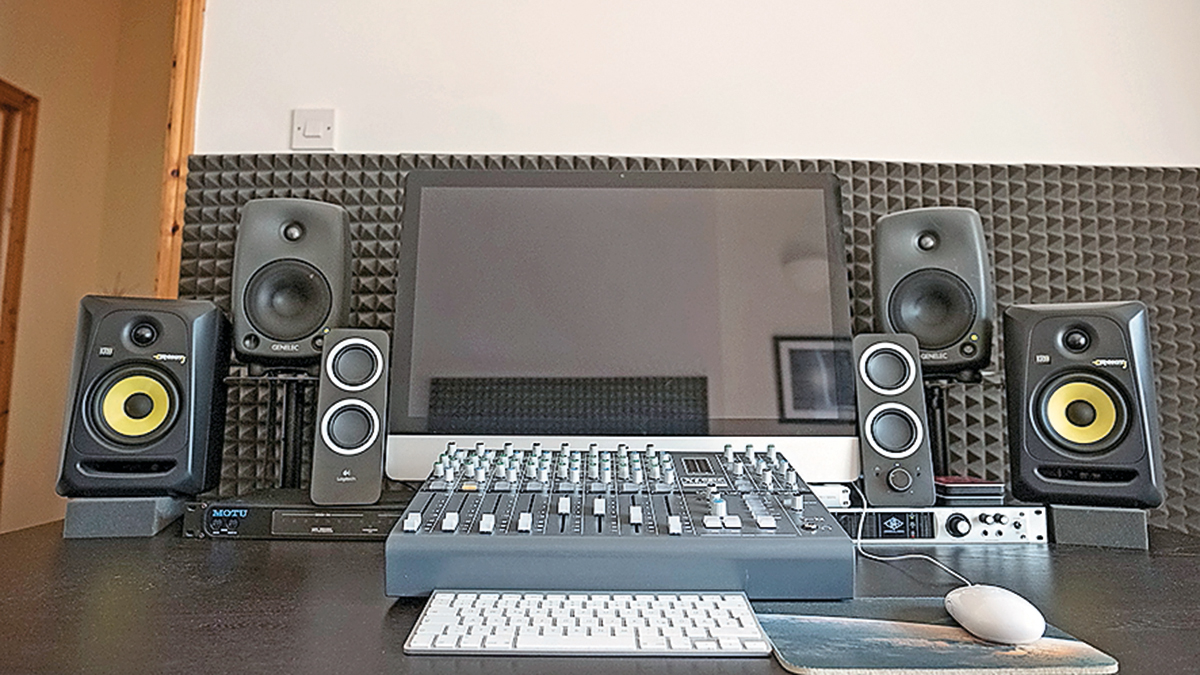
Monitoring
So what sort of environment do you prefer to work in and where’s your studio based?
“The studio’s in the middle of my house. I’ve been through different phases, having studios in the house and external studios, but I work in quite an odd way. Nine times out of ten I’ll get a chunk of the track done on my headphones. I can do a rough mixdown pretty quick, and then I’ve got about four different systems I can play it on. I don’t have a problem with the neighbours because I generally make music really quietly.”
Making music on headphones can be a challenge for some when it comes to referencing. How did you get around that?
“I’ve been making music using headphones for quite a few years and I record really low as well. It’s never perfect, but over the years you can build it up to a level where, as long as you have a good pair of headphones, you can get to know them quite well. I use Beyerdynamic’s DT 770 Pros. For monitoring, I use Genelec 8030s, so in combination with them, the Beyerdynamics and my KRK Rokit 5 speakers I can get what I’m after. I’ll also check on a pair of cheap Logic speakers and ordinary hi-fi speakers. If you can reference between those and your laptop speakers, you should be good.”
I presume you’re looking for a sound that best suits a club environment?
“70% of my music is going to be played in the clubs, so it’s important to just make sure the kick and bass are really on point, and what I’d really recommend people do is get bass traps and some acoustic foam because they make such a big difference to your mixdowns. I use Auralex and just put it on the wall with adhesive tape. If you tape measure your room, you can go to their website and they’ll tell you how far from the wall to put your monitors and where to place them.”
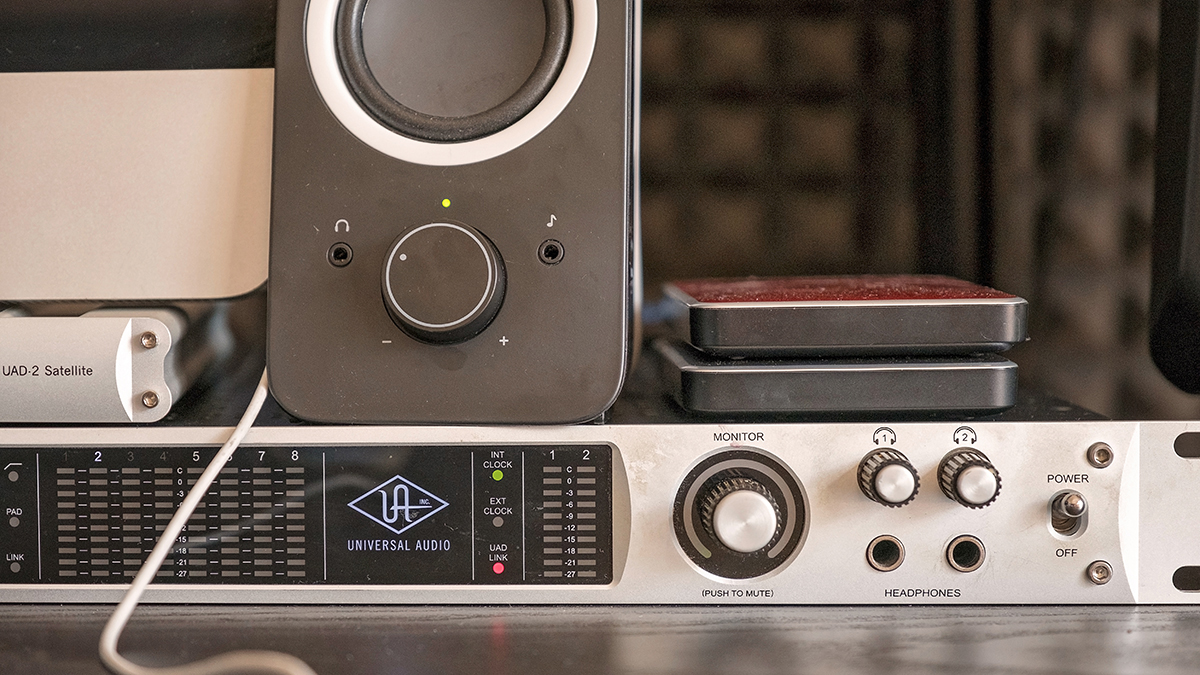
Preferred plugins
You’re using Ableton for production, right?
“I actually made the album in ReWire with Logic, but I go through phases of doing different things. At the minute I’m using Ableton, and then I’ll bounce the stems and mix in Logic because I just feel I can get a better mixdown in Logic. It’s a bit more time-consuming, but it’s just the way I work at the minute. Ableton’s an amazing program, my favourite one to make music on by far, and I’ve pretty much used every program, but the mixdown’s just not as good as I can get it. Maybe if you did mastering for a profession you could figure out Ableton and make it sound better, but I can’t so I bounce the stems into Logic. I really want to learn Pro Tools actually; I’ve been told it’s got the best sound, so it would be interesting to explore that.”
What plugins do you favour using?
“I don’t use that many soft synths. I use Waves and I’ve got a Universal Audio soundcard, so I use those plugins a lot. I think the combination of the two has just about every plug-in you need. I also use Soundtoys quite a lot. In terms of virtual instruments, I don’t really use them to be honest.”
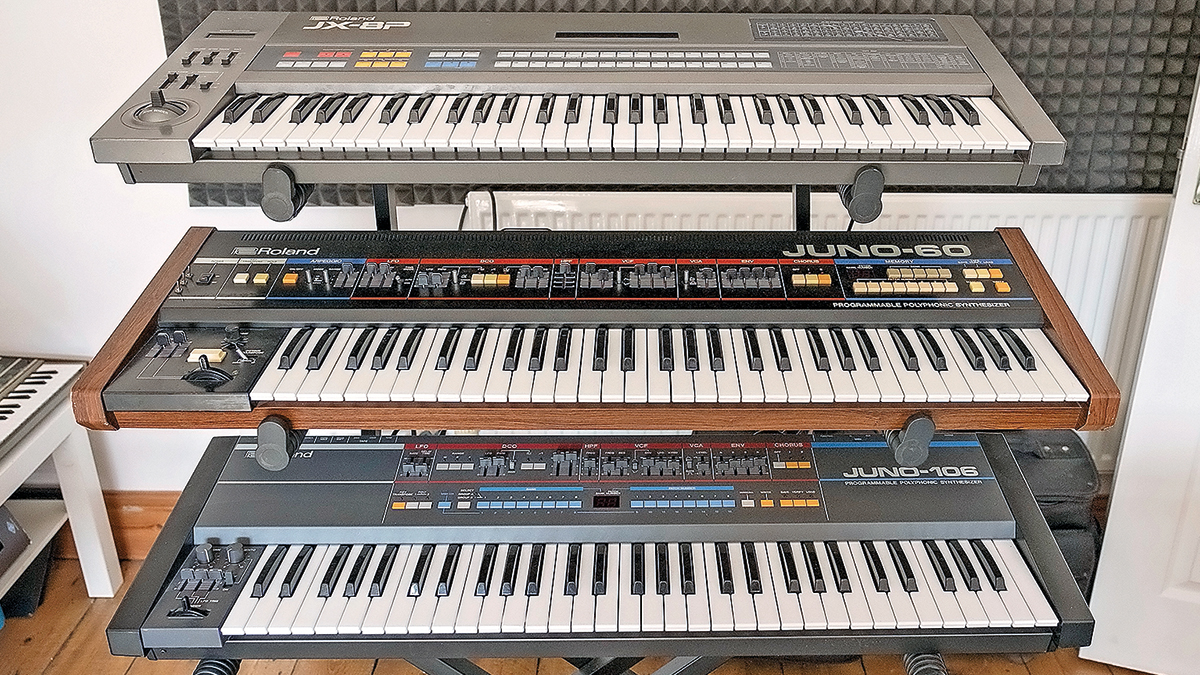
Hammering on the keys
You mentioned the Moog Voyager – what other hardware synths do you use?
“The Nord Lead 2 is a really good one. If I was going to recommend anyone to get a first synth, I would get that. It’s just got so many sounds, pretty much everything: effects, bass, pads, synths. It’s always fun to use. I’ve also got the Roland Juno-106 and a Roland JX-8P, which has really good strings and a lot of quirky noises that sound good. I recognise a lot of presets from the JX-8P on really old classic tunes, so it’s always fun to stumble across those. Without putting lots of effects on them, the analogue sounds seem to be a lot richer.”
Did you use any vintage gear?
“I used a Korg M1, which is a bit of an old synth. It still sounds really good. Obviously there’s some cheesy presets in there, but it has some nice quirky sounds too. I used it on a couple of tracks. A lot of old tracks solely used that synth. To be fair, when it came out I think it got hammered.”
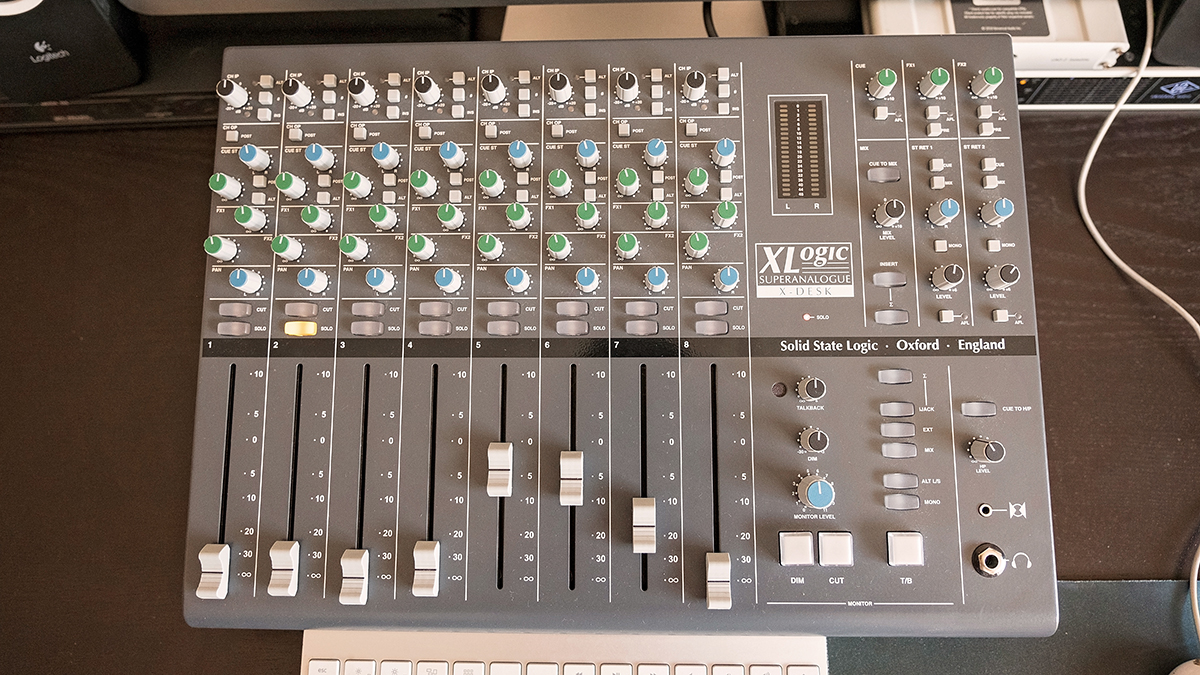
Honing the skills
You seem to have a good appreciation for sound placement. Does that come through years of refinement or is it more to do with studying the masters?
“I suppose it’s just something you perfect over time, like what goes where, trying not to have the same sounds at the same time so nothing’s clashing and getting all the sounds talking to each other. It’s about crafting it, then over time you get to hear things better. One of the most important things is being able to go back with fresh ears. You can do a track in a week, but it’s good to just step away for a while and then you’ll hear everything that needs doing to it – not just what needs to be added, but more often what needs taking out.”
Do you mix in the box or on a desk?
“I’ve actually got an SSL X-Desk, which I’m still learning at the moment so I didn’t use it on the album. I’m really diving into that now. I bought it just before making the record but was so focused on finishing it that I wanted to keep that focus. It’s just the SSL ‘sound’ that I want. I’ve been to studios and obviously read the reviews and it sounds like it’s the best outboard mixing desk you can get. It’s an 8-track, so very small and I’ll probably group the channels up, but it sounds really good.”
You have a piano - do you use it much?
“I go on the piano every day. It’s a good thing to do at the end of the day, whether for 30 minutes or an hour. For the Burnski stuff, the piano doesn’t really creep in, but I work on a lot of other music as well. I’d love to be able to release that type of music one day. I’m focused on a few things at the moment; there’s a lot of music on that computer [laughs].”
DNA is out now via Constant Sound. For more info and DJ dates head to the Burnski Facebook page.
Future Music is the number one magazine for today's producers. Packed with technique and technology we'll help you make great new music. All-access artist interviews, in-depth gear reviews, essential production tutorials and much more. Every marvellous monthly edition features reliable reviews of the latest and greatest hardware and software technology and techniques, unparalleled advice, in-depth interviews, sensational free samples and so much more to improve the experience and outcome of your music-making.


